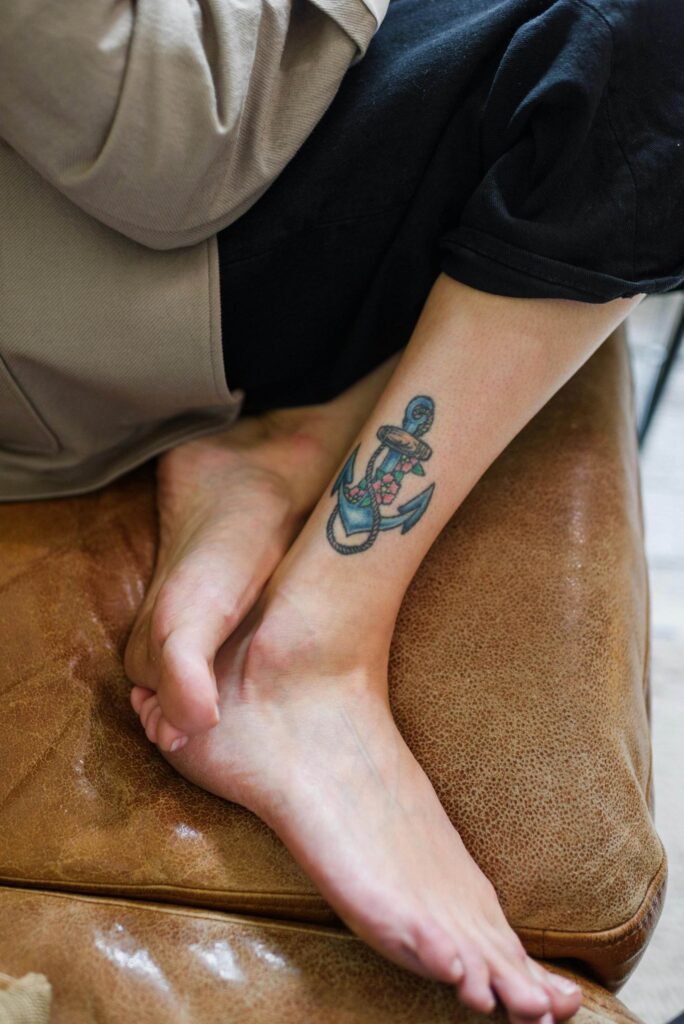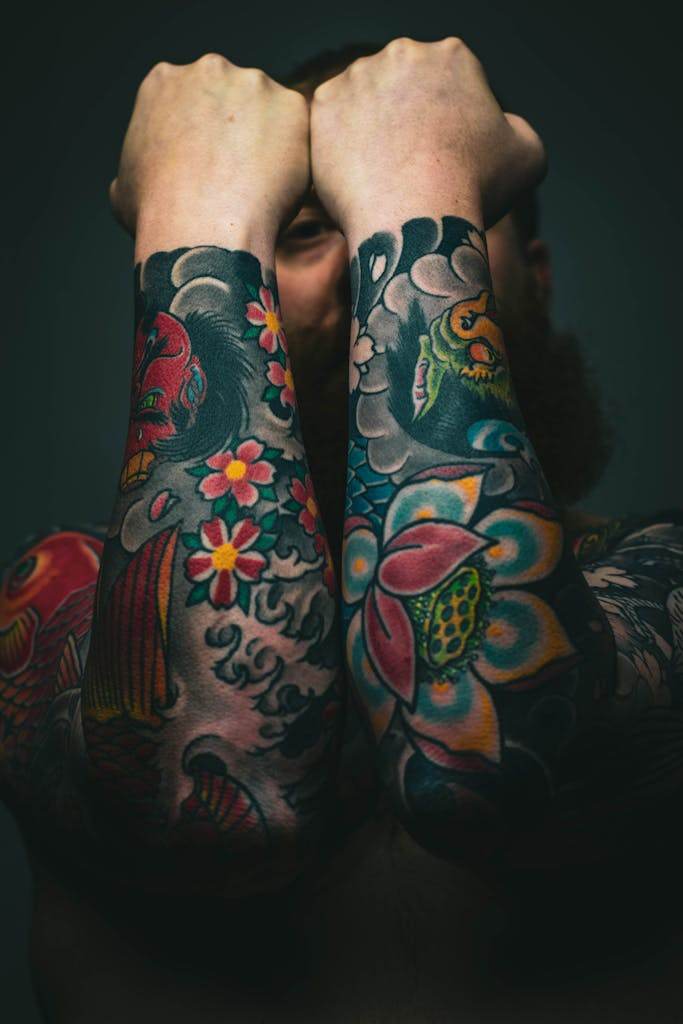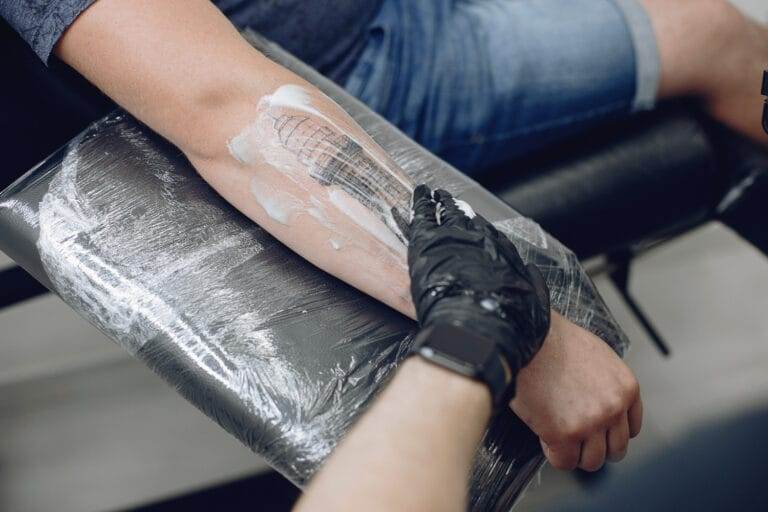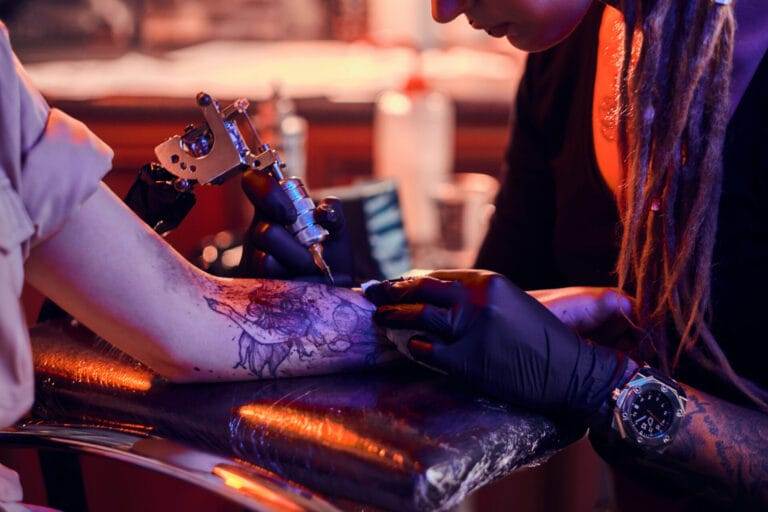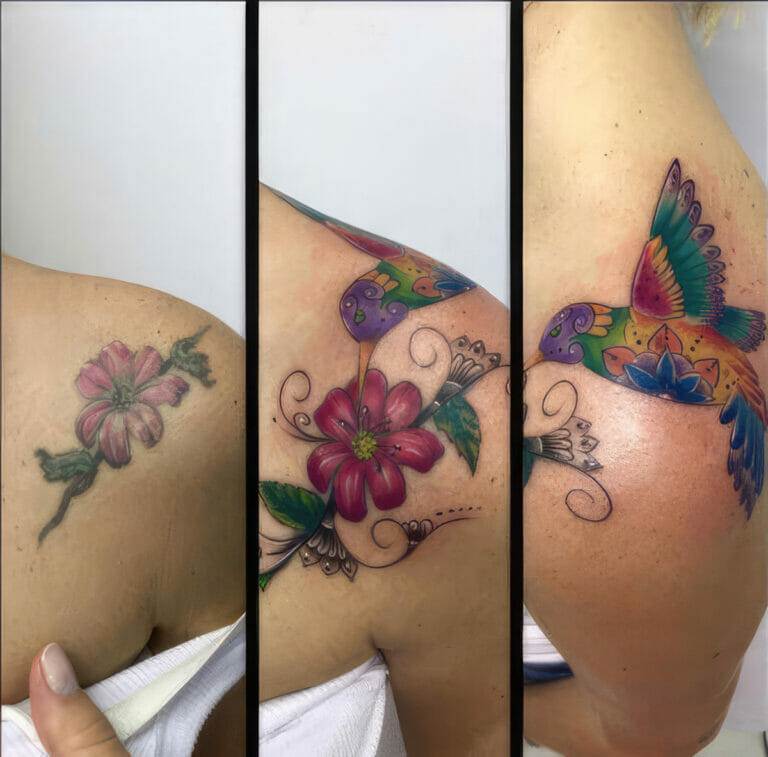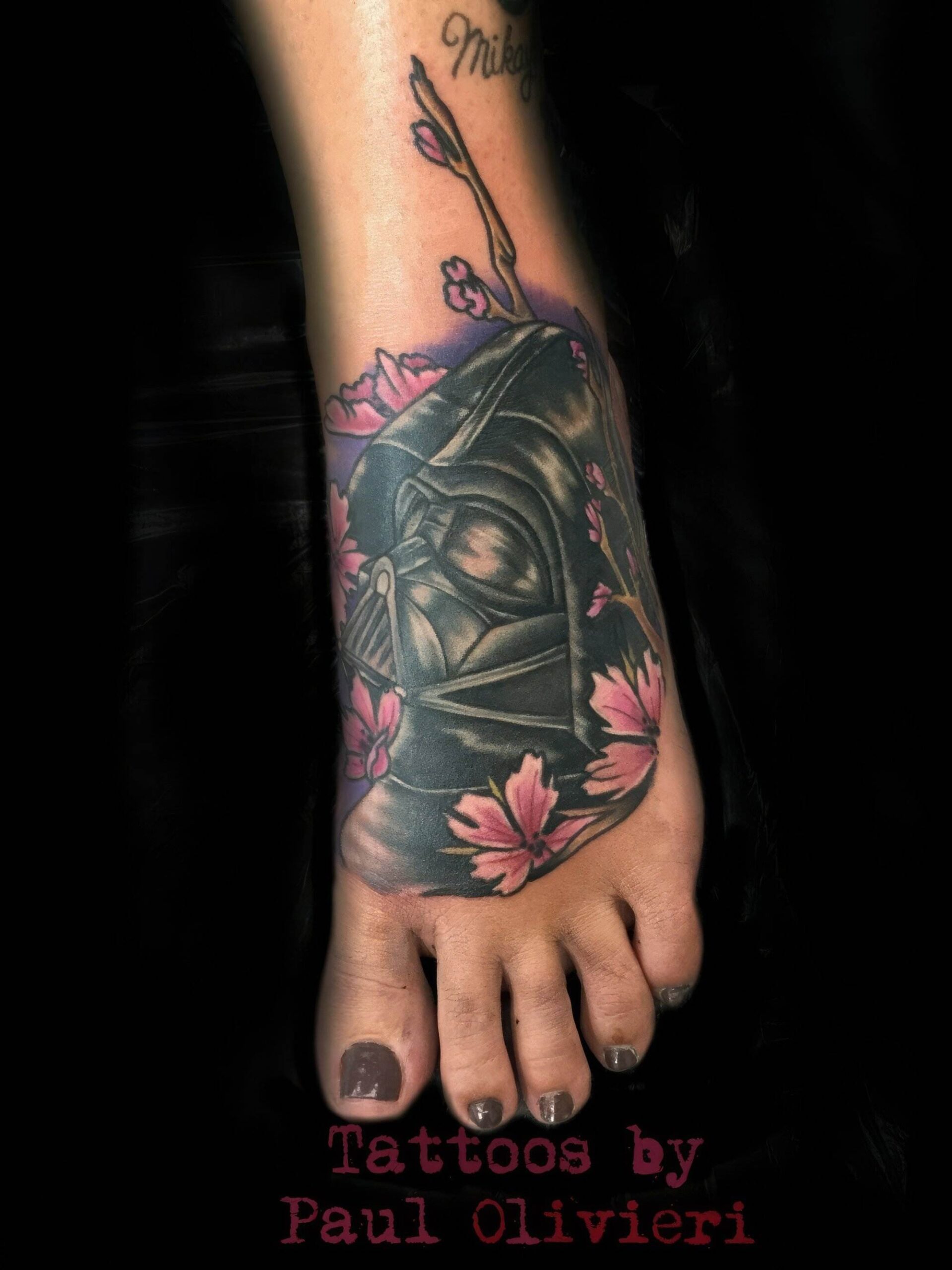
Preparation for Getting Your First Tattoo
When it comes to getting your first tattoo, preparation plays a crucial role in ensuring that the experience is both enjoyable and rewarding. The first steps in this journey involve choosing a tattoo design that resonates with you and researching tattoo artists who can bring that vision to life.
Choosing a Tattoo Design
Selecting a tattoo design is not just an art form; it often represents a piece of who you are. Many first-timers feel overwhelmed by the abundance of options available. To simplify the process, consider these tips:
- Reflect on Personal Meaning: Think about symbols, words, or images that hold significance in your life. This could range from meaningful quotes to representations of cherished memories.
- Explore Different Styles: Familiarize yourself with various tattoo styles such as traditional, tribal, watercolor, minimalist, or realism. Each style has its unique characteristics, which can significantly influence the overall look of your tattoo.
- Look for Inspiration: Browse through online platforms such as Pinterest or Instagram, where you can find countless tattoo designs. Create a mood board to collect ideas that resonate with you.
- Consider Longevity: Keep in mind that some designs may be trendy, but tattoos are meant to last a lifetime. Aim for a design that you can envision growing with you.
As you settle on a design, remember that it’s perfectly acceptable to make adjustments. A unique and personalized tattoo can evolve from several iterations of an idea.

Researching Tattoo Artists
Once you have a concrete design in mind, the next step is to research tattoo artists. This process is equally as important as selecting the tattoo itself, as the artist will be the one executing your vision. Here’s how to find the right artist:
- Check Portfolios: Go through the portfolios of various tattoo artists to assess their skill level and style. Look for consistency and quality in their work.
- Read Reviews: Seek out reviews and feedback from their past clients. Platforms like Google, Yelp, or social media can provide insights into other’s experiences.
- Visit Tattoo Studios: If possible, visit local tattoo studios to get a feel for the environment. Observing cleanliness and professionalism can help you feel more comfortable.
- Consultation: Once you identify potential artists, schedule a consultation. This meeting allows you to discuss your design, express any concerns, and gauge how well the artist understands your vision.
- Ask Questions: Don’t hesitate to ask questions about the artist’s experience, the equipment they use, and their aftercare recommendations. A good artist will be open and informative.
By thoughtfully choosing your tattoo design and carefully selecting an experienced tattoo artist, you set the foundation for a fulfilling tattoo experience. The more informed and prepared you are, the more confident you will feel when sitting in the tattoo chair.
Tattoo Placement and Size Considerations
After narrowing down your tattoo design and selecting the right artist, the next critical steps involve deciding on tattoo placement and determining the size. Both factors are essential in ensuring that your tattoo not only looks great but also fits seamlessly with your lifestyle.
Deciding on Tattoo Placement
Tattoo placement can greatly influence how the design is perceived and how you feel about it in the long term. Here’s how to make an informed choice regarding where to place your tattoo:
- Visibility vs. Concealment: Consider how visible you want the tattoo to be. Do you want it to be a conversation starter or something more personal that only you see? Common areas for visibility include the forearm, wrist, or neck, whereas areas like the thigh, back, or side may provide more discretion.
- Pain Level: Different parts of the body have different pain levels during the tattooing process. Areas with more flesh, like the upper arm or thigh, tend to be less painful compared to bony areas like the ribs or elbows. Research pain tolerance if you’re concerned about discomfort.
- Body Changes: Think about potential changes to your body over time. Areas prone to weight fluctuation, like the stomach or thighs, may distort the tattoo as your body changes. If you anticipate significant changes, opt for placements that are more stable.
- Personal Aesthetic: Ultimately, how the tattoo placement complements your body aesthetics matters. Consider how the tattoo will look based on your everyday wardrobe and lifestyle.
Visualizing the design in specific areas can help solidify your choice. You might want to use temporary tattoos or tattoo stickers to preview how it feels.
Determining Tattoo Size
Once you’ve pinpointed a placement location, it’s time to consider the size of your tattoo. Size can affect both the overall design and its impact. Here are some tips to guide your decision:
- Design Complexity: Intricate designs often require larger sizes to capture all details, whereas simpler designs can be smaller without losing their essence.
- Placement Impact: The location can also influence size. For example, a large tattoo may look stunning on a back but could overwhelm a smaller area like the wrist.
- Future Additions: If you foresee adding more tattoos in the future, consider how the size of your first tattoo will fit into a larger vision. A small piece may allow for easy expansion later.
- Proportionality: Make sure the tattoo is proportionate to the area of your body where it’s placed. A tattoo that is either too small or too large for the chosen area can look out of place.
A good rule of thumb is to visualize your tattoo in proportion to the body part you’ll be decorating. Even using a piece of paper to outline your design can provide perspective on the size. In conclusion, tattoo placement and size are pivotal elements to consider before taking the plunge. With careful thought on where and how big to get your tattoo, you can ensure that it will be a satisfying expression of your individuality while also ensuring it stands the test of time.
Understanding the Tattoo Process
Having prepared thoroughly with your design, placement, and size, it’s time to delve into the actual tattoo process. Understanding what to expect during the consultation and application stages can make the experience much more enjoyable and less intimidating.
Tattoo Consultation
The tattoo consultation is a vital first step in the tattoo process and a great opportunity to clarify your vision and ensure that you and your artist are aligned. Here’s what to anticipate during your consultation:
- Sharing Your Ideas: This is your chance to express your concept clearly. Bring reference images, as visuals can help convey your thoughts better than words alone.
- Artist’s Input: A good tattoo artist will offer suggestions based on their expertise. They might tweak your design for better flow or suggest alternative placements that will enhance the final product. Keep an open mind during this discussion.
- Discussing Details: This includes specifics like the coloring, shading techniques, and any additional elements you’d like to incorporate. It’s also important to discuss the time it will take and the cost involved.
- Understanding Health and Safety: A professional artist will explain their hygiene practices, including how they sterilize equipment and maintain a clean environment. Don’t hesitate to ask questions regarding their process.
- Portfolio Review: Don’t forget to look through the artist’s portfolio during the consultation. This will help you gauge their expertise and ensure that their style aligns with your vision.
Engaging in a thorough consultation not only sets the stage for a positive experience but also builds trust between you and your artist.
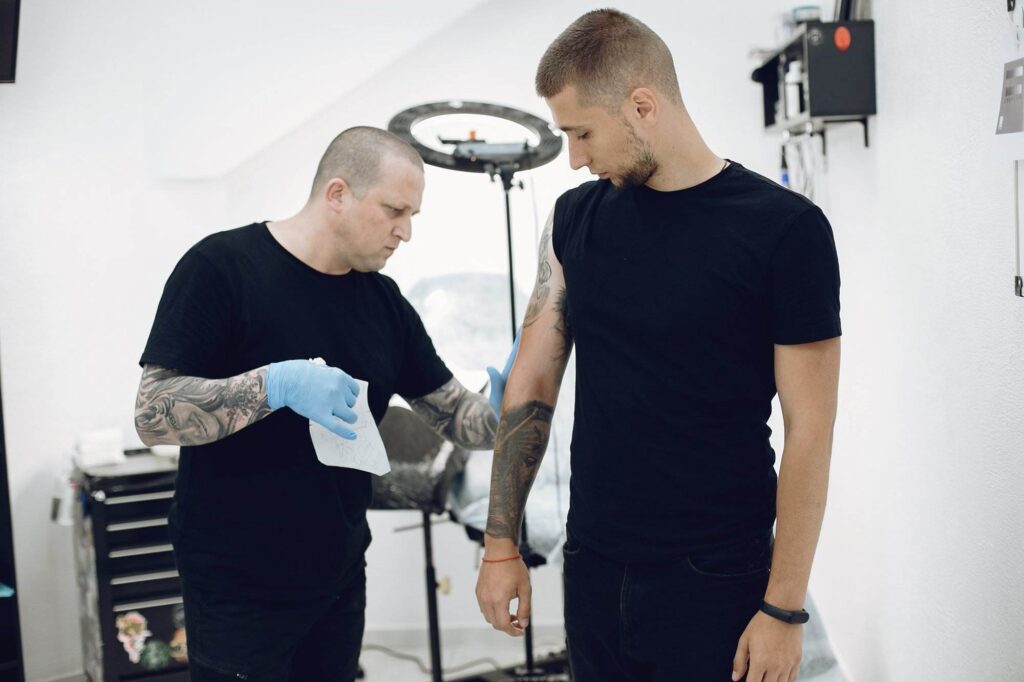
Tattoo Application Process
Once everything is set during the consultation, you’ll move on to the actual tattoo application. Understanding this process can help you feel more comfortable and prepared.
- Preparation: The artist will clean and prepare the area where the tattoo will be applied. You’ll often see them using antiseptic solutions to ensure that the skin is clean.
- Stenciling the Design: Using a stencil, your design will be transferred onto your skin. This allows you to visualize the final placement before the ink goes in. Make sure to check for accuracy.
- Tattooing Begins:The artist will begin using a tattoo machine to insert ink into your skin. While everyone’s experience varies, here’s a general idea of what you might feel:
- Initial Sensation: Expect a slight scratching sensation. The discomfort might intensify depending on the area being tattooed.
- Take Breaks: If at any point you feel overwhelmed, don’t hesitate to ask for a break. Your comfort is paramount.
- Completion and Cleaning: Once the tattoo is finished, the artist will clean the area again and apply a bandage or ointment. This is also a great time to ask for aftercare instructions.
Being well-informed about the tattoo consultation and application process not only boosts your confidence but also enriches the overall tattoo experience. Knowing what to expect can transform your first tattoo from a stressful milestone into an exciting personal journey of self-expression.
Tattoo Aftercare Tips
Once your tattoo is complete, the real work begins: keeping it healthy and vibrant! Proper aftercare is crucial for ensuring that your tattoo heals well and maintains its beauty for years to come. Here, we’ll explore essential aftercare tips to safeguard your new ink and discuss common pitfalls to avoid.
Properly Caring for Your New Tattoo
Caring for your new tattoo is a straightforward process, but attention to detail is key. Here’s a simple guide to help you through the healing phase:
- Leave the Bandage On: After getting your tattoo, your artist will apply a bandage. Keep it on for the recommended duration (usually a few hours), as this protects the area from bacteria and external irritants.
- Gently Clean the Area: Once you remove the bandage, clean the tattoo gently with lukewarm water and mild, fragrance-free soap. Avoid scrubbing; instead, pat it dry with a clean towel.
- Moisturize: Apply a thin layer of an artist-recommended moisturizer or healing ointment to your tattoo. Look for products designed specifically for tattoo aftercare. Repeat this process several times daily.
- Avoid Tight Clothing: Wear loose-fitting clothing over your tattoo to prevent irritation and allow the area to breathe during the healing process. Tight clothing can rub against the fresh ink and prolong the healing time.
- Stay Hydrated: Drinking plenty of water helps your body heal faster. Staying hydrated supports skin elasticity, which can aid in the recovery of your tattoo.
Remember, healing can take anywhere from a few days to several weeks, depending on various factors including size and location. Be patient and attentive during this time.
What to Avoid After Getting a Tattoo
While taking care of your new tattoo is vital, it’s equally important to know what to avoid to ensure optimal healing. Here are some common mistakes to steer clear of:
- Don’t Scratch or Picking: As your tattoo heals, it may begin to scab or itch. Resist the urge to scratch or pick at it, as this can damage the tattoo and introduce bacteria.
- Avoid Swimming: Stay out of pools, hot tubs, lakes, and oceans for at least two weeks after getting your tattoo. Submerging your tattoo can introduce bacteria and lead to infections.
- Skip the Sun: Direct sunlight can fade fresh tattoos. Make sure to cover your tattoo with clothing or use a high SPF sunscreen once it’s healed to protect it from UV rays.
- No Alcohol and Smoking: Alcohol can thin your blood, which may affect the healing process. Smoking can also hinder blood circulation and overall healing, so it’s wise to avoid both for some time.
- Avoid Harsh Chemicals: Be mindful of the products you apply to your skin. Avoid using perfumes, lotions with strong fragrances, and any sort of exfoliant on or around your tattoo until it has fully healed.
By adhering to these aftercare tips and avoiding common missteps, you can help ensure that your tattoo not only heals properly but also remains vibrant and beautiful for years to come. Taking the necessary precautions right from the start will enhance your overall tattoo experience and lead to results you can proudly show off.
Tattoo Touch-Up and Maintenance
After investing time and care into getting your tattoo, maintaining its vibrancy and making sure it stands the test of time becomes essential. Over time, you might find that certain areas of your tattoo need a little refreshing. Here’s how to navigate touching up and ensuring your tattoo retains its beauty.
When to Consider a Tattoo Touch-Up
Tattoo touch-ups can be a normal part of tattoo care. Here are some signs that may indicate it’s time to consider a touch-up:
- Fading Colors: Over time, tattoos can lose their vibrant colors due to sun exposure, skin exfoliation, or general wear and tear. If you notice that your tattoo colors are significantly duller, it may be time for a touch-up.
- Blurring Lines: Tattoos can spread or fade, making lines appear less sharp or defined. If your design starts to look washed out or blurry, a touch-up can restore those crisp edges.
- Scarring or Skin Damage: If your skin has experienced trauma where the tattoo is located, such as cuts, burns, or an allergic reaction, consult with your tattoo artist. They can assess the need for a touch-up to bring your tattoo back to its original glory.
- New Elements: If you’ve added other tattoos or wish to integrate new elements into your existing tattoo, a touch-up allows you to harmonize it with your tattoo collection.
It’s generally advisable to wait at least 3-6 months after the initial tattoo application before considering a touch-up, allowing enough time for full healing.
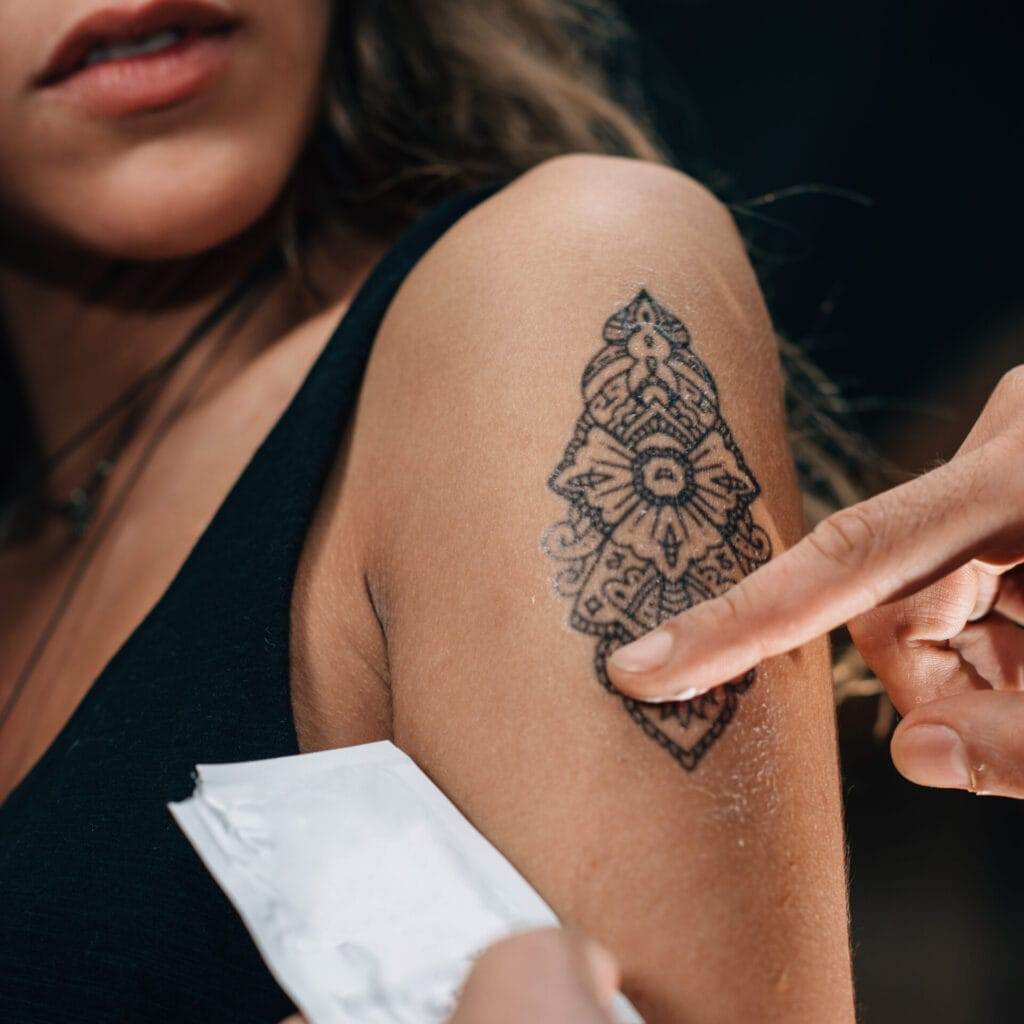
Tips for Maintaining Your Tattoo’s Vibrancy
Keeping your tattoo looking fresh long after it’s been done is all about proper maintenance. Here are several practical tips:
- Use Sunscreen: UV rays are one of the biggest culprits when it comes to fading tattoos. Always apply a high SPF sunscreen to the tattooed area before going out in the sun. Consider wearing protective clothing if you’re planning on extended sun exposure.
- Moisturize Regularly: Keep the skin hydrated to maintain its elasticity and prevent dryness. Use fragrance-free moisturizers to avoid irritation. Look for products that contain natural ingredients beneficial for the skin’s health.
- Stay Hydrated: Drinking plenty of water helps maintain skin health. When your skin is well-hydrated, your tattoo’s appearance will reflect that vitality.
- Avoid Harsh Products: Some skincare products contain strong exfoliants or chemicals that can wear down the tattoo. Stay clear of products with alpha hydroxy acids or retinol on or near your tattoo, particularly if it’s still healing.
- Schedule Regular Touch-ups: Depending on the ink and style, tattoos may require periodic touch-ups. Many artists recommend coming back once a year to maintain the vibrancy of your tattoo.
By staying proactive with touch-up considerations and following these maintenance tips, you can enjoy your tattoo’s stunning appearance for years to come. Investing time in care and attention will allow you to continue to cherish your tattoo as a piece of art and a reflection of your personal journey. Embrace your tattoo as not just a mark on your skin, but a lifelong testament to your unique story.

